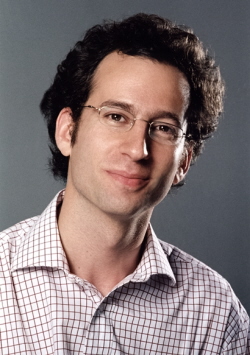
INSEAD Assistant Finance Professor Lily Hua Fang. Photo courtesy of INSEAD Knowledge
BY BETTING ON stocks that lack media coverage, investors may be doing themselves a favour, according to a new research paper co-authored by INSEAD Assistant Finance Professor Lily Hua Fang and Associate Professor of Finance Joel Peress.
The study found that investors stand to gain comparatively higher returns by punting on stocks that have no media coverage than those that enjoy a high media profile.
Indeed, the study’s survey of a portfolio of stocks with no media coverage found that it outperformed another portfolio of stocks with high media coverage by three per cent annually, even after controlling for commonly known risk factors such as market, size, book-to-market, momentum, and liquidity.
The outperformance is particularly significant among small stocks, stocks with low analyst coverage, stocks primarily owned by individuals, and stocks with high idiosyncratic volatility. In fact, such stocks offer a “no-media premium” of eight to 12 per cent per year after factoring in the risk factors.
“If you seek out these stocks with no media coverage, they’re sort of ‘hidden gems’, they’re not very obvious, not on people’s radar screens, so investors need to do a little more homework in terms of seeking them out,” says Fang, who was awarded the prestigious Smith Breeden Distinguished Paper Award by the Journal of Finance for her work with co-author Peress.
“But if you do so, you seem to be able to earn significantly higher returns than simply buying things that are flashing up on the Bloomberg (screen).”
|
It focused on the media coverage of the stocks by four American national daily publications -- the New York Times, USA Today, Wall Street Journal, and Washington Post.
Furthermore, the research explained that while the lack of liquidity could explain the persistence of the “no-media premium” phenomenon, it could not explain the cause.
The research therefore concluded that the phenomenon stems from an “information story” such as Nobel laureate in economics Robert Merton’s “investor recognition hypothesis”.
Fang says what is reported about the companies by the media is of less consideration than the amount of public awareness that their visibility in the media attracts.
“It’s an interesting implication that comes out of the paper,” says Fang.
“As I said, without media coverage, ‘no news is good news’ for the investors, which means you earn higher returns. But if you turn the perspective around to look at the companies’ perspective, it implies that their stock prices are slightly depressed because they are lesser known. And I think companies in fact are well aware of this.”
To illustrate her point, Fang added that following the introduction of a raft of stock market regulatory reforms in the US by way of the Sarbanes-Oxley Act in 2002, many analysts left Wall Street. Subsequently, many companies lost analyst coverage.
“We know that traditionally analyst coverage is very important in terms of disseminating information ... letting investors know about them,” says Fang.“This triggers liquidity, this increases the company’s visibility, and essentially our paper shows this has an impact on the stock price. It allows the company’s stock price to be more efficiently priced.”

Associate Professor of Finance Joel Peress. Photo courtesy of INSEAD Knowledge
“It means that if your company is out there and known, people need to know about your stock in order to invest in your stock. So if your company is never really known, then few people will hold it, and these people are not going to be in a theoretical world of having a diversified portfolio. So their risk premium for the stock will be high.”
“So therefore any kind of thing that helps companies raise their visibility would have an indirect impact on their cost of capital. So after a lot of companies lost analyst coverage, this became a particular relevant issue.”
Fang says what is reported about the companies in the media is less important than the amount of public awareness that their visibility in the media attracts. She adds that the simple message of their research is that “companies that are visible basically get away with lower returns, because their prices are perhaps fully reflecting their value”.
In contrast, stocks that are not on investors’ radar screens have relatively lower share prices and thus offer higher returns, she says.But Fang concedes that there is a strong correlation between the size of companies and the amount of media coverage they attract. Larger companies tend to get more media coverage.
Even so, “we are not saying that the stocks with high coverage are artificially price inflated that they are offering lower returns. In fact their returns pretty much come up to neutral when you compare to the reasonable benchmarks.”
And as the cost of raising capital is higher for companies with no media coverage and consequently lower share prices, Fang says such companies should think about raising their media profiles, which could help make up for the lack of analyst coverage in some instances.

